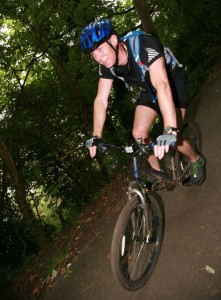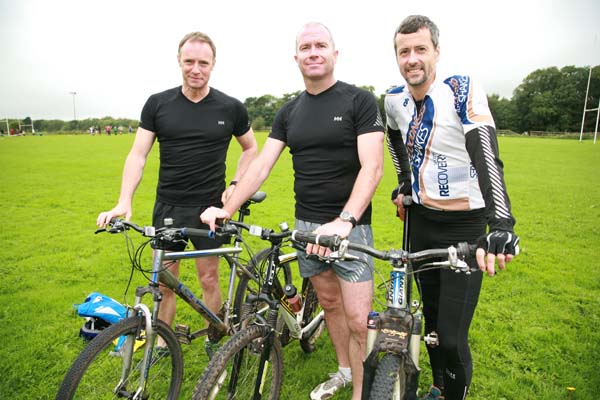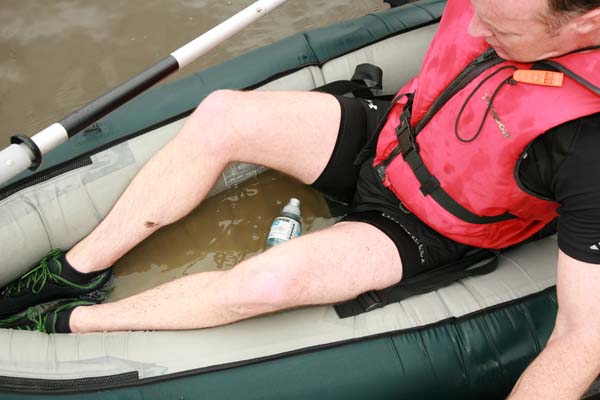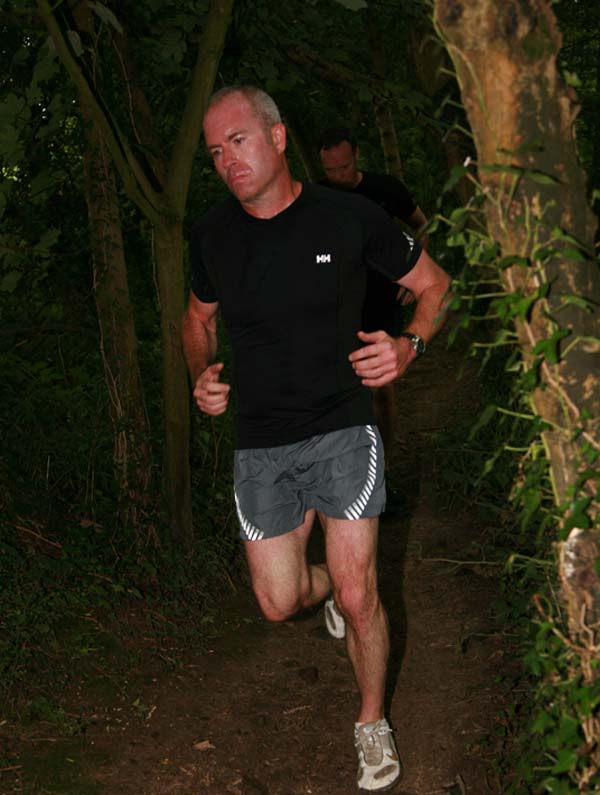How to finish an adventure race (and survive to tell the tale)
Team OAG nailed the Tough Mudder challenge in May, after a fashion, but having forged a strong team amidst the mud and blood, we needed something else to train for - something to stop the inevitable slide towards the sofa and chocolate.
Soggy Irish mountains and lakes in October seemed to tick all the right masochistic boxes and we signed up for the Killarney Adventure Race’s 57km route, consisting of running, cycling, kayaking and more running. We soon realised this will take some planning; skills, even.
Luckily Helly Hansen asked one of the UK’s best adventure racing teams to come and spend a day telling us what to expect. So with some trepidation Dean and I met up with the legendary “For Goodness Shakes!” adventure racing squad in a chilly wood near Bristol.
The FGS team are hardcore. They’d just finished a five-day event in Scotland, covering hundreds of miles with only 1-2 hours of sleep every 24 hours. Competing with different teams for that event, they’d pretty much all graced the podium.
This meant they must be tired. Good.
After some useful tips about the sport we were measured up for bikes and put into teams with an FGS guru to guide us round.
Energy conservation
Heading into the woods on a running section, it was quickly clear that true trail running meant having to look at where every step went. With roots and slippery rocks on a narrow path it was not as straight forward as road running and much more tiring.
Andy Wilson, Team OAG coach for the day happily chatted as we clipped along. I restricted my answers to monosyllables for safety’s sake.
As we climbed a steep slope, Andy suggested that instead of leaning in to the hill and dropping the arms, we straighten up and let the lungs work properly, as well as transfer the effort to the more powerful ‘glutes’, rather than the ‘quads’. It felt strange at first, but worked well thereafter.
But then it would, as these guys do distances we can only have nightmares about and they know all the tricks for conserving energy.
Mid-foot, known often as ‘barefoot’ running, is also a technique the FGS team employ. Shorter steps balanced over the mid-foot, rather than the traditional long-striding heavy heel strike, allow the team to travel faster and more securely for longer over difficult ground.
Our first transition to the bike was smooth, but then we weren’t changing shoes, just whacking on a helmet and gloves. Andy often runs wearing his gloves, saving seconds.
The first phase on the bike is a good time to get some food inside you. It could be an oat bar or a sports gel, as well as some fluids such as an electrolyte drink. The secret seems to be, eat and drink before you think you need it – keep the tank topped up.
Efficiency rules
We barrel down towards Bristol docks. Bike handling is all the more important against the clock, as I clamp the brakes on too hard and expend too much effort getting up to speed again. Andy, however, is smooth on the bike with an easy, even, high-cadence pedal stroke. Efficiency rules.
At the docks we have to inflate our own kayaks before taking to the busy waterway to complete a 3km circuit. We forget to put the bung in, but luckily, as we’re inflatable, we don’t sink. We paddle on with an extra hundred weight onboard, sitting in three inches of refreshing River Avon.
The FGS team stress the need to use the core and back muscles for powering the paddle stroke, not so much the arms. Especially over long distances, it’s an essential technique for preserving strength and boat speed.
Pace yourself
Back to running, I begin to realise how keeping a steady pace is vital. Not just to last the distance but because adventure racing is about staying as a team, within conversational distance at all times, the rules say; so it’s no good haring off if you happen to be feeling better than the rest.
To this end, Andy tells us that the FGS team use bungee cords to pull along team members who may, quite reasonably, be going through a ‘bad patch’ on a five-day race across Patagonia.
Getting the team to the end in one piece, fast, is the aim – even if your bike breaks miles from anywhere. The FGS team take self-reliance and planning to new heights, covering every eventuality, while being cunning and determined enough to cope with the things they can’t plan for.
The test run finishes with a circuit of some playing fields and a sprint in to the finish line. I leave Dean behind, a broken man, though within conversational distance, if he could speak at that point. And both of us were left with some top-notch advice ahead of October’s Killarney Race, though I’m more worried about surviving the after-party.
Fiona Wilson’s Top Adventure Racing Tips.
1. Training must be fun. Consider it play and get out there and enjoy it.
2. Embrace technology. Full suspension bikes, grippy trail shoes and well-designed running packs – they are there to make life easier and the race more comfortable.
3. Get to know your team. Adventure racing is a team sport and working as a unit will mean you’ll enjoy the race more and be more successful.
4. Practice your navigation. There is no point running fast in the wrong direction.
5. Nutrition is everything. Practice with different nutrition strategies and make sure you stay hydrated with electrolyte-rich drinks, and maximise recovery with a protein-carb recovery drink. “Normal food’ like peanut butter sandwiches can work just as well in a long race as ‘sport fuel’ – and be easier on the stomach!
6. Don’t over train. The hardest part of adventure racing is sometimes getting a full team to the start line. Rather get there 5% under trained but 100% fit than broken.
7. Don’t ignore the technical aspects. Rope work, kayak skills and even swimming can crop up in races and give a team an easy advantage or be the source of anxiety. Be prepared.
8. Transitions are vital. Practice them or risk losing unnecessary time that is hard to claw back out on the hill.
9. There is no excuse for a poorly maintained bike. Ever.
10. You can always find a smile for the cameras.
Words and Photos: Will Robson






Definitely, what a great website and educative posts, I definitely will bookmark your website.All the Best!